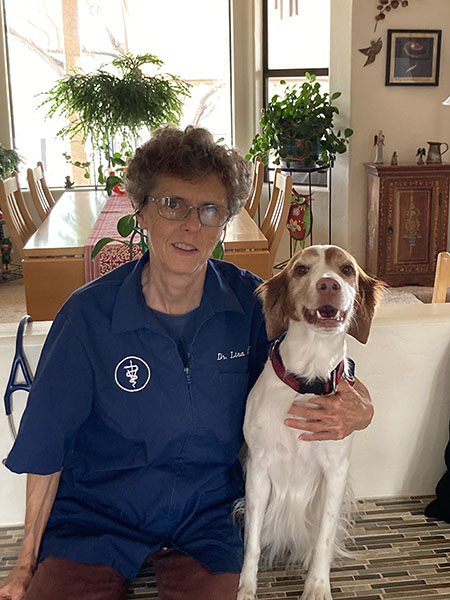Symptoms in humans resemble the flu, but dogs are regrettably more likely to develop heightened forms of the disease with muscle wasting, seizures, and bone and brain lesions. That’s why scientists and veterinarians with the University of Arizona’s Valley Fever Center for Excellence have been working for 25 years toward finding a vaccine for the debilitating disease. According to the Center, two-thirds of all U.S. Valley Fever infections are contracted in Arizona, even though nationally Valley Fever is uncommon and considered an “orphan” disease.
Recently it was revealed that all of the Center’s hard work has paid off with the announcement of Anivive, a groundbreaking fungal vaccine successfully vetted for Valley Fever in dogs. Reported as being the first vaccine with demonstrated efficacy against a systemic fungal disease, Anivive’s vax has so far been shown to afford protection in 100 percent of vaccinated dogs. Led by Center founder and director Dr. John Galgiani, MD, the group’s work was featured in a recent Scientific American article.
With the announcement, we were able to catch up with Dr. Lisa Schubitz, DVM, a biomedical researcher with the U of A team working on the vaccine. Schubitz graduated from Colorado State University College of Veterinary Medicine and Biomedical Sciences in 1991. In 1996, she became involved with Valley Fever research, specifically vaccine development, which overlapped with her clinical interests in companion animals. Both canines and felines suffer from the disease with a range of symptoms and outcomes similar to that of humans. Dually affiliated with the Department of Veterinary Science and Microbiology at U of A and the Valley Fever Center for Excellence, Shubitz spearheaded a 3-year study into the epidemiology of Valley Fever in dogs in Tucson and Phoenix.
Dr. Schubitz explained that diagnosis of VF is performed through blood draws and x-rays. While there is no guarantee of saving the animal, current treatment options take an average of 6-12 months. Costs can be so cripplingly prohibitive that many overwhelmed pet owners have opted instead for euthanasia over watching their pets suffer needlessly — a heartbreaking decision no one should ever have to make. The good news is that the Anivive vax is projected to be commercially available by 2022. Like all vaccines, however, the purpose is to keep beings from contracting the disease, so dogs who already have it at the time of the vaccine’s eventual release won’t be helped by Anivive.
Secondly, due to climate change, it’s estimated that more than 30 million dogs are now at risk for VF. While dogs are most frequently infected, it affects a wide array of animals. As stated, cats can also contract the disease, but at a much lower frequency. Data shows there’s only one feline case estimated for every 50 canine cases. The diagnosis and treatment are similar with felines but symptoms differ, in that infected cats can get non-healing lesions with a pale yellow to reddish discharge, and cats tend to be sicker than dogs at the time of diagnosis. Vets in Tucson were seeing pets come in with VF between once a day and once a week this summer. It’s been particularly bad in local shelters this year where it’s ravaged dogs. To give you an idea of its virulence among canines, in Arizona only 3 percent of humans are identified as contracting it, while dogs account for 6 percent, double the cases.
Rather alarmingly, marine mammals could potentially develop VF as well, as it’s been reported in dolphins and sea otters already. Around the San Francisco area, scientists at UC Davis researching sea lions reported that blood draws identified antibodies to the fungus among the population, suggesting exposure within this group as well. You can see why it’s so important that successful vaccines are created.
We asked the good doctor about her life’s work and how we got to where we’re at now. It’s been a long road but with its dividends on the horizon she credits much of the good fortune regarding the vax to noted U of A veterinarian and pathologist Dr. Raymond Reed, who shared decades of knowledge and research with her before his passing in 2002. That, she acknowledged, was a big loss to veterinary science. While it’s been difficult to get funding for research, she said, “There are a lot of angels out there helping the animals, and the shelters in the area have been doing a really good job. I’m continually amazed at these people who will take these dogs that are so sick.”
Another of the Center’s big breaks came via team member Dr. Marc Orbach, PhD, in a corn plant fungus known as Cochliobolus. He discovered that Cochliobolus and Coccidioides shared a common gene, Delta CPS1. Removing Delta CPS1 from the corn fungus made it less harmful, and doing the same to Coccidioides rendered it completely harmless in rodent models. Mice, as it turns out, are considered the best model for this type of research. Dr. Schubitz told us that she’d been working on the vaccine for 15 years at that point and had never worked with anything as protective as the Delta CPS1 strain. Dr. Galgiani stated that the vaccine wouldn’t be possible without breakthroughs by Dr. Shubitz and Dr. Orbach.
Not long afterwards they started a GoFundMe campaign and raised about $10,000 to aid their cause, but it was an email from a woman who wanted to help that gave them the boost they needed by donating roughly $40,000 over the next year. That infusion of funds enabled them to do a whirlwind of experiments, which gave them enough preliminary data to apply for an NIH grant worth nearly $5 million. That money is what allowed them to continue the work that would eventually lead to the vaccine.
On another positive note, the success with dogs has been, as Shubitz pointed out, a proof-of-concept moment that is leading to a similar vaccine for humans in the near future. Neither vaccine could come a moment too soon. As the planet continues to heat and droughts continue to intensify, wildfires burning out of control have been spreading Valley Fever through smoke at an increased rate throughout the 21st century in California. If these patterns continue, as predicted, protection will be a welcome blessing for dogs and humans alike.













